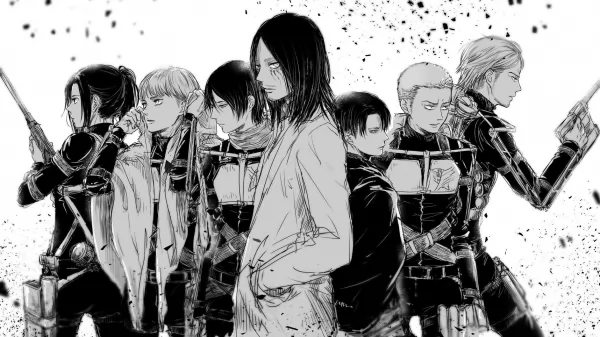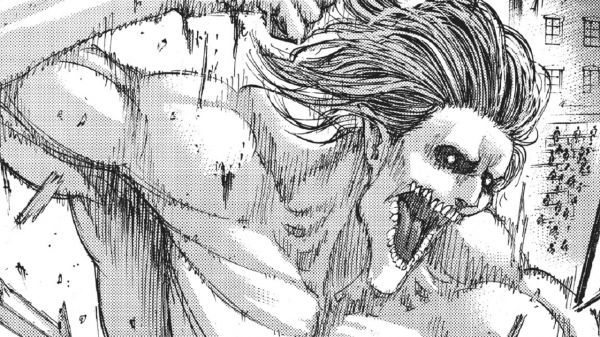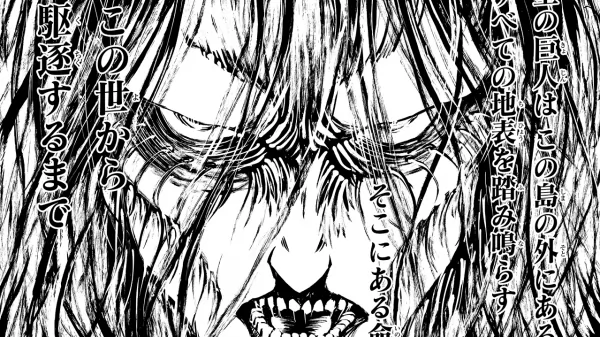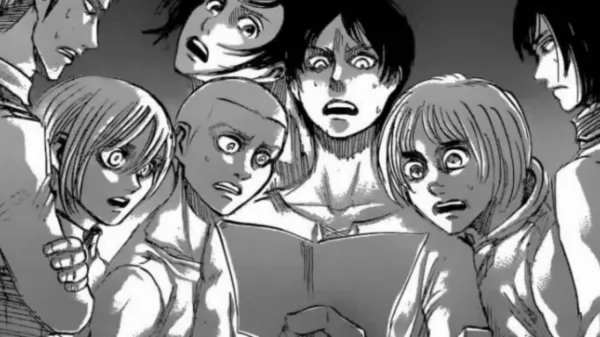A work like The attack of the Giants, with its themes and narrative paradigms related to the editorial context of the shonen, it had simply never been seen. The epilogue of Hajime Isayama’s manga places a tombstone on an entire era, a decade of experimentalism for the Japanese comics market and in which the dark fantasy of the young Japanese sensei has established itself as a real cult phenomenon, well outside the Land of the Rising Sun.
The profoundly international breath of the work, and its powerful dramaturgical vein, have accompanied us for almost 12 years of serialization, just over a decade characterized by a sumptuous, never banal and – until the end – surprising writing operation. levels. We arrive at the end of a journey, the journey of Eren, but also of Armin and Mikasa, as well as of Reiner, Levi and also of Gabi and Falco and of Jean and Connie with a touch of bitterness: that of an ending that, despite the moving background message, was not able to adequately provide all the answers we had asked ourselves (for a more complete picture, read our summary of the finale of The Attack of the Giants here).
A shonen outside the box
Summing up the Attack on Titan manga may not be easy: it is a work whose impact in the landscape of the shonen was, in 2009, devastating to say the least. A complex narrative universe, steeped in mysteries, of a “lore” partially perceptible in its early stages and extraordinarily stratified as the story continued its course, one piece after another, one arcane at a time. A dark fantasy with an irrepressible stylistic imprint and a very clear script idea: to deconstruct, right from the start, all the paradigms of an entire narrative genre. And he succeeds very well, Isayama: every narrative arc, every script cue, every character introduced (and subsequently deepened) takes its place in a large mosaic that becomes more and more complex, which takes on slowly from the action splatter hues of the first chapters. slowly a political dimension and, gradually, more and more intimate and introspective.
Eren is the alpha and omega of a story that wants to deconstruct all the trappings of the narrative and of the classic hero: the predestined, in spite of himself, surrounded and crushed by the weight of a cast of incredible characters, which evolves slowly and explodes with an overwhelming (and unsettling) force in a final arc in which the most incredible authorial choices emerge.
The Attack of the Giants is a story of continuous reversals: an apology for violence, frightening and cruelly realistic about war and the relativism of conflict, a critique of racism in which all the pessimistic vision of its author emerges overwhelmingly, but it is above all a story of continuous reversals of roles.


A devastating metaphor on the relationship between pain and love, between heroism and martyrdom. It is a tale of descent into hell, the ascent of which appears possible but never predictable, as a warning. An omen that has the bitter and pungent taste of a dark world and without the possibility of redemption, but in which the glimmers of light and positivism towards humanity do not fade completely.
A coherent work, (almost) to the end
The final parenthesis that leads to the moving epilogue of the work is, in fact, the sum of all Hajime Isayama’s artistic career. In the crazy final showdown, and in the twists that enrich the already complicated lore of Shingeki no Kyojin, all the themes addressed by the author in the 11 years of serialization intersect with violence. The authorial strength of the work lies precisely in the narrative management of the entire production, which in the final arc modifies and substantially overturns the tones and perspectives of the story, ringing up to the end a series of twists with a devastating and sensational impact.
In the final arc, all the character development of the protagonists is played out, phenomenal on an emotional level, meticulous and refined in the great design of his screenplay. But not everything is perfect: Isayama is one who has always liked to ask a thousand questions to provide, in the end, the right answers at the right time, fueling the expectations of the final resolution of his story.
And if up to chapter 138 of The Attack of the Giants the entire narrative mosaic holds up with vigor and keeps the qualitative bar very high, unfortunately it is precisely with the epilogue that the author was unable to close the work with the same authorial ideas that have always distinguished it. The themes and the final message of the last tables remain extraordinary and devastating, but the rush to bring his story to fruition without providing sufficient answers on the entire worldbuilding basted by the manga, unfortunately, will remain a small stain on a great masterpiece that could have been total. A heartfelt, moving and symbolic epilogue that, however, cannot fully satisfy for the management of some twists and certain narrative implications, which would have needed at least one more chapter, but which on the whole has at least the merit of remaining coherent. with the narrative universe of the work.
Inaccuracy and violence: Isayama’s stylistic code
The graphic style of The Attack of the Giants has always been a cross and a delight for its readers. Messy and imprecise at the beginning, peculiar language and authorial style at the end. With its rough, essential, in certain situations even grotesque, Hajime Isayama has slowly imposed a stylistic code very different from the visual cleansing and wonders of the animated version.


Yet, to date, it is difficult to imagine the Attack on Titan manga without the essential and deeply gore aesthetics of its very young author. Panel after panel, Isayama-sensei’s pencil has been able to carve out an important place for the aesthetic language of the work, a trait capable of enhancing the most violent aspect of the story and above all the dynamism in the action phases.
The curving lines, the true leitmotif of Isayama’s titanic anatomy, accompany the action without ever making it too confusing (except, perhaps, only for the final battle), a dirty and violent graphic style that fully enhances all the pathos and visual exasperation of the work. It must be said, however, that the character design, which is far too flattened and not very varied, especially in the initial volumes, suffers from it. An element, the visual style, which remains part of the mangaka’s authorial language, which equally manages to provide flashes of direction and simply powerful stage construction. The mirror reflected in his themes and his writing: a complex creature, at times deformed, yet tremendously fascinating.
